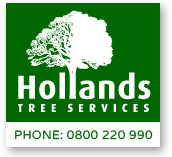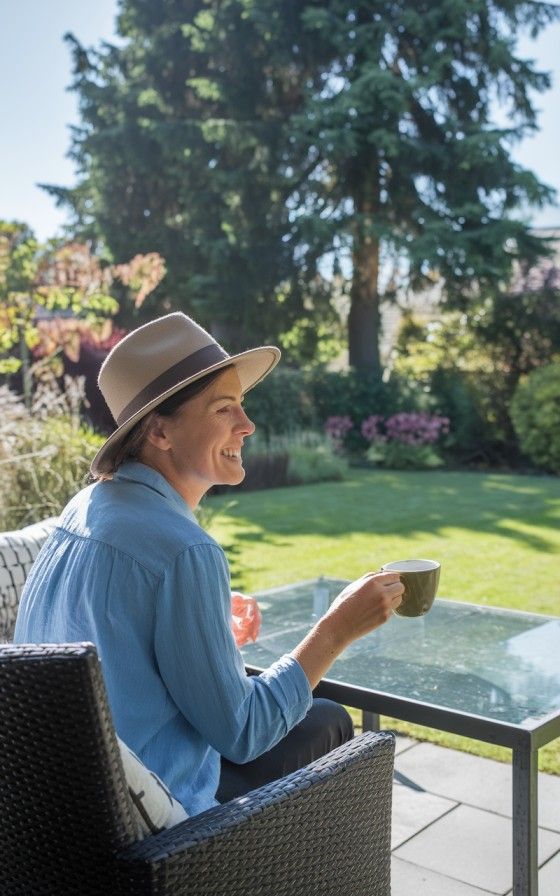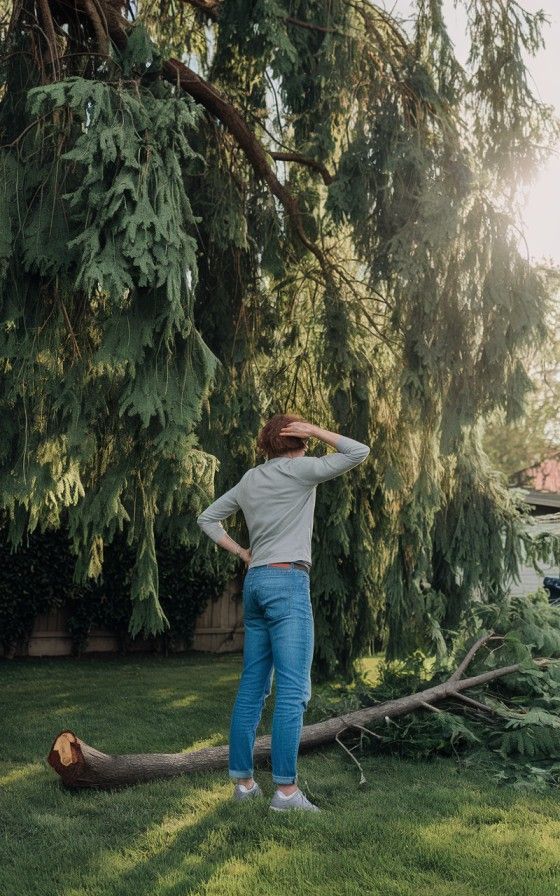
Overgrown Tree Blocking Your SunLight Or Making Your Section Look a Mess?
Are you frustrated with overgrown, unruly trees taking over your garden?
Is your property starting to feel out of control, but you don’t have the time, tools, or know-how to sort it yourself?
Maybe you've tried the DIY route—only to end up with uneven cuts, broken branches, or even a near-miss with the ladder.
Overgrown trees aren’t just an eyesore—they can
block sunlight, weaken surrounding plants, and even become a safety hazard.
- Low-hanging branches over driveways and walkways
- Keep Power Lines Clear – Avoid hazards by ensuring branches don’t interfere with power lines.
- Encourage Healthy Growth – Proper trimming directs growth and prevents overcrowding.
- Broken or decaying limbs that could fall at any moment
- More Sunlight & Better Views – Let more light into your home and open up your outdoor space.
- A messy, unkempt garden that feels impossible to manage
But don’t stress—we’ve got you covered.
Whether you need tree trimmed or tree completely removed in Christchurch, Riccarton, or North Canterbury, we’ll tidy things up so you can enjoy your garden again, hassle-free.
We Help Canbrians Keep Their Tree's Looking Spot-On
We understand how overwhelming it can be when your garden starts to get out of control. Tree trimming isn’t just about keeping things tidy—it’s about safety and the long-term health of your trees.
With years of experience across Christchurch, Merivale, and beyond, we’ve helped hundreds of homeowners and business owners restore order to their outdoor spaces.
Our team of professional arborists has the skills, knowledge, and equipment to trim and maintain your trees safely and effectively, ensuring your property looks great and stays safe—without the hassle.
Affordable Hedge Trimming Without Compromising Quality
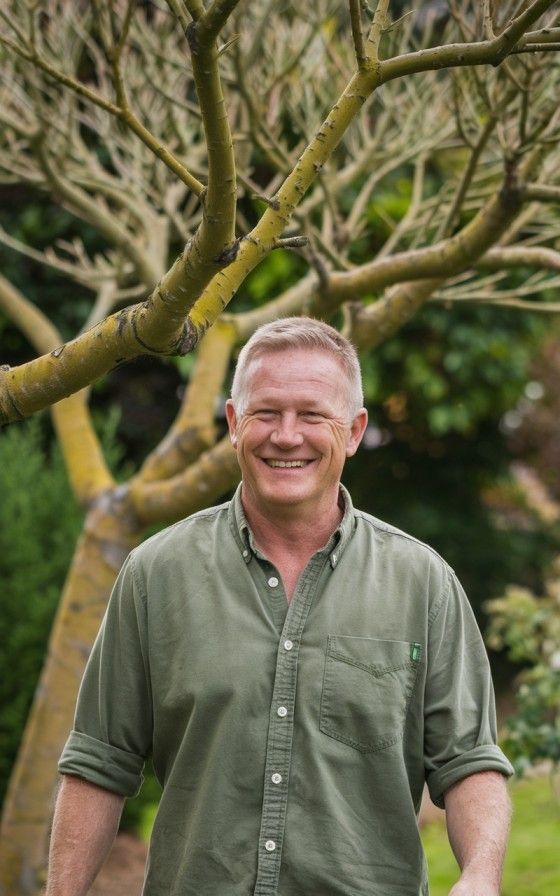
Expert Tree Trimming
Your trees will look tidy and grow healthier.
Which Means - A more attractive garden and peace of mind during storms.
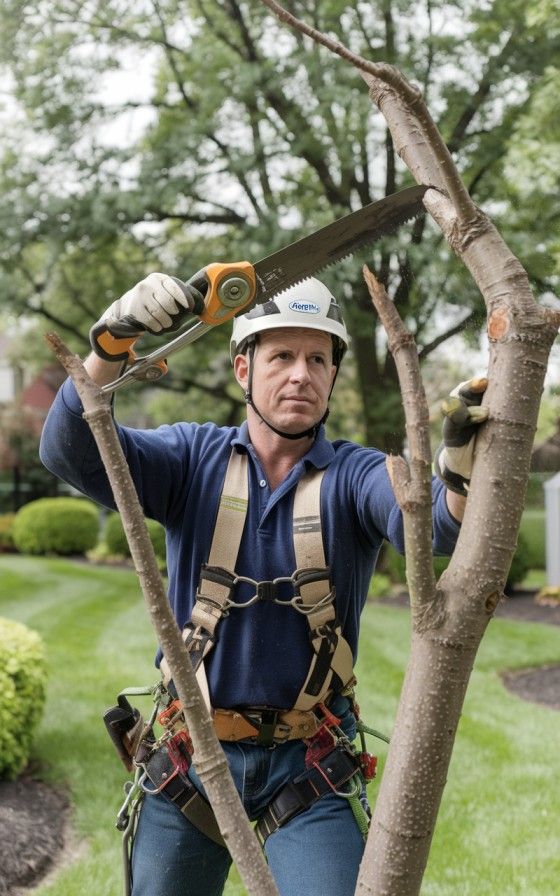
Fruit Tree Pruning
Boosts fruit production and reduces pests.
Which Means - More delicious home-grown fruit for you and the whānau.
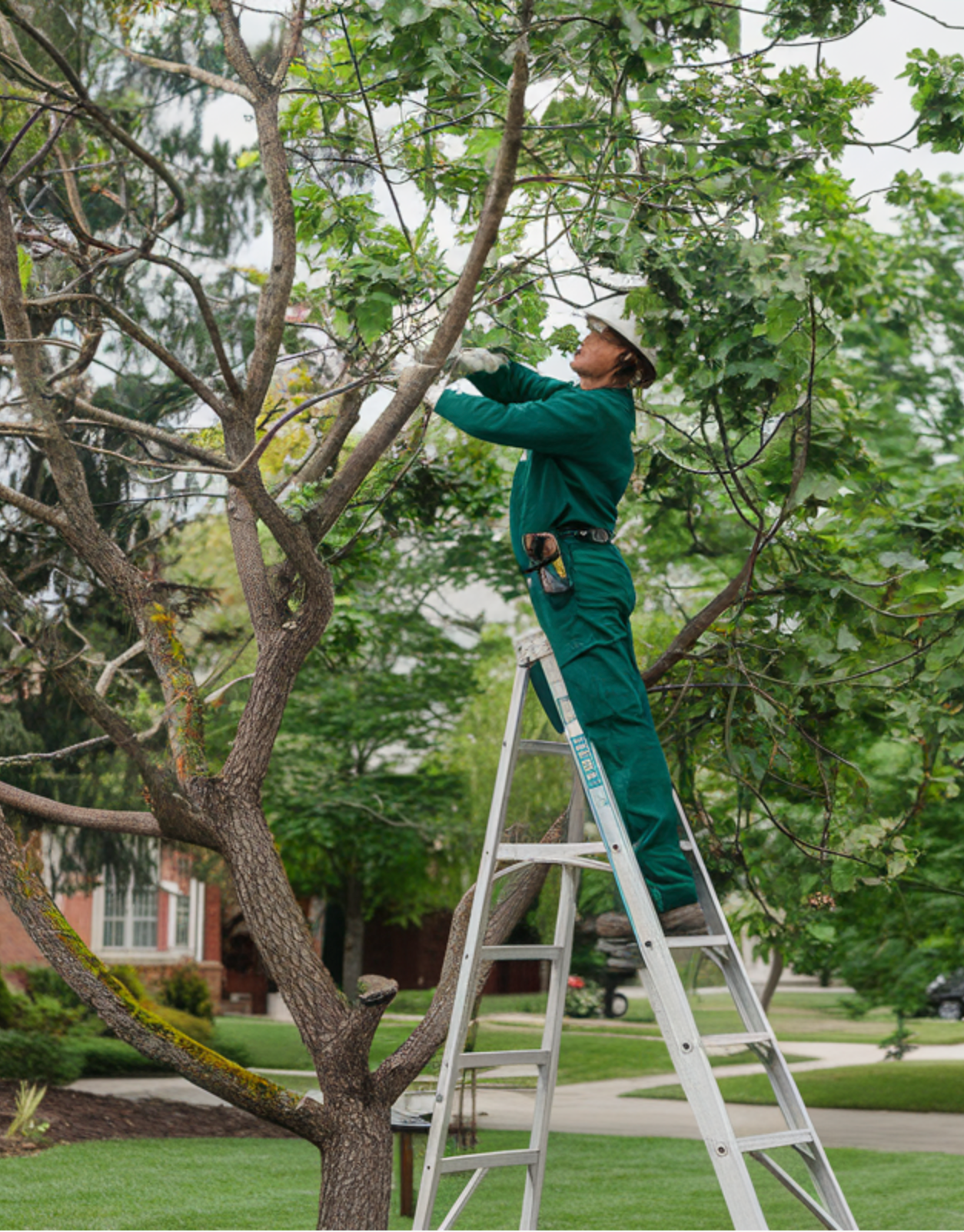
Affordable Pricing
Quality service that won't break the bank.
Which Means - You can keep your garden in check without stressing about costs.
* Click button to request an Arborist to call you back ASAP
What Our Customers Can Expect From Us
"No Stress, No Injuries—They Did It All!"
"I’ve had a few close calls with ladders, so I finally called the pros. Best decision ever!
They handled everything safely and efficiently." – Lisa, Merivale
Lisa M., Merivale
"DIY? Not Worth the Risk—Hire These Guys!"
"After a near-miss with a ladder, I called the pros. Best decision ever! They were safe, fast, and my garden looks amazing." – Steve, Fendalton
Steve H, Fendalton
"Worried About a Mess? They Clean Everything Up!"
"I’ve used other companies before, and they always left a mess behind. Not Adam and the team!
They did an incredible job trimming the hedges and made sure my property was spotless before they left. Highly recommend!"
Sarah, Rolleston
The Tree Health & Beauty Method 1 to 3
Step 1 – Book Your Free Assessment
We’ll have a quick chat to understand your garden's needs and provide a no-obligation quote.
Step 2 – Create a Tailored Plan to Trim
and prune your trees, ensuring they’re healthy and looking their best.
Step 3 -Enjoy Your Garden
Once we’ve done the hard graft, you’ll have a beautiful, well-maintained garden to enjoy without lifting a finger.
* Click button to request an Arborist to call you back ASAP
Christchurch Tree Care Services
with All the Extras
Hazardous Branch Removal – Increased safety for your home and family. Which Means… You don’t have to worry about falling branches causing damage or injury.
Fully Insured Arborists – You’re protected against accidents or damage. Which Means… You can relax knowing your property is in safe hands.
Expertise in Christchurch & Canterbury Trees – We understand the unique needs of trees in the local area. Which Means… Your trees and garden will flourish in the Canterbury environment.
Transparent Pricing – No hidden costs—just clear, upfront pricing so you know exactly what to expect.
Quick, Efficient Service – Minimal disruption to your daily routine. Which Means… You get beautifully trimmed trees without a long wait or hassle.
Seasonal Expertise – We trim at the right time of year to promote healthy regrowth and reduce the risk of fungal infections.
Detailed Cleanup – No mess left behind after trimming. Which Means… Your yard stays clean and neat.
Tree Pruning for Health – We trim with the health of your trees in mind. Which Means… Your trees grow stronger and live longer, improving the overall look and health of your garden.
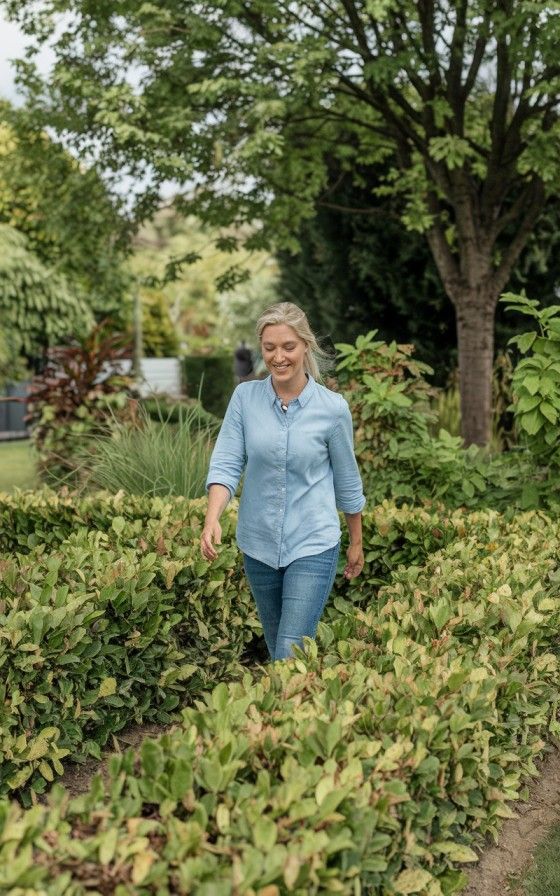
To get all this and more…
FAQ - Here Are the Answers to Your Tree Trimming Questions
Who is responsible for trees overhanging my property in NZ?
In New Zealand, if a tree from a neighbouring property overhangs your land, you have the right to trim branches or roots that cross into your property, but only up to the property boundary.
However, you cannot damage or remove the tree itself without the owner’s permission.
Both you and your neighbours are responsible for ensuring that trees and large plants do not cause problems for others.
If an overhanging tree is causing issues, it’s best to discuss the matter with your neighbour first.
If the tree poses a danger or is blocking access, your local council may be able to provide guidance.
Whats difference between Trimming and Pruning a Tree NZ?
Tree trimming is commonly referred to as pruning when it involves removing unnecessary or unhealthy branches to improve tree health. Trimming, on the other hand, is typically done to shape a tree and encourage balanced growth.
Tree Pruning – Focuses on removing dead, diseased, or weak branches to promote overall tree health and structure.
Tree Trimming – Helps control overgrowth, improve appearance, and allow better light penetration.
Both processes use tools like shears, saws, and trimmers, depending on the size and type of branches being cut.
How much do arborists charge per hour in NZ?
In New Zealand, professional arborists typically charge between $75 – $100 per person per hour (excluding GST). Prices can vary depending on factors such as:
The complexity and size of the job
Accessibility and location of the tree
Specialised equipment required
Whether additional services like stump grinding or waste removal are included.
For larger projects or emergency tree work, some companies may offer fixed quotes instead of hourly rates.
It's always best to get a detailed quote upfront to understand the full cost of the service.
What is the best tree trimming technique?
The best tree trimming technique depends on the type of tree and the goal of the trim. However, proper pruning methods help maintain tree health, structure, and appearance. Key techniques include:
Cut Back to a Bud or Branch – Always trim back to a healthy bud or branch rather than leaving stubs. This encourages healthy regrowth.
Select Outward-Facing Buds – Cutting to a bud that faces outward helps prevent branches from growing inward and crisscrossing.
Avoid Over-Pruning – Removing too much foliage at once can stress the tree and affect its ability to produce energy.
Use the Three-Cut Method for Large Branches – To prevent tearing, make an initial notch cut on the underside of the branch, then a second cut further out to remove the branch. Finish with a clean cut at the branch collar.
Trim at the Right Time of Year – Most trees respond best to trimming in late winter or early spring before new growth begins.
Using these techniques ensures that trees stay strong, healthy, and well-shaped.
What month is best to trim trees in NZ?
The best time to trim trees in New Zealand is late winter to early spring (July to September).
Deciduous trees - Trim before new growth starts to see the structure clearly.
Less stress - Pruning in dormancy helps trees recover faster.
Healthier growth - Reduces risk of disease and pest infestations.
What is the best tree trimming technique?
Cut back to a bud or branch for healthy growth.
- Choose buds facing outward to direct growth away from the tree’s interior.
- Avoid crisscrossing branches by trimming strategically.
- Encourage strong structure by maintaining open space within the tree.
To get all this and more…
